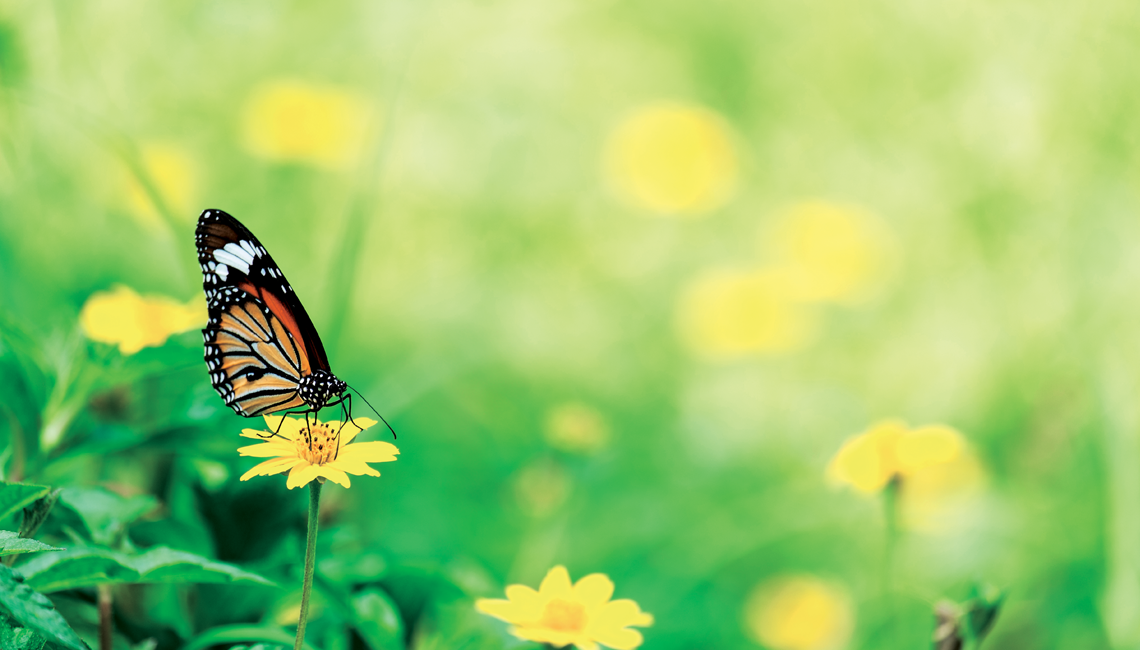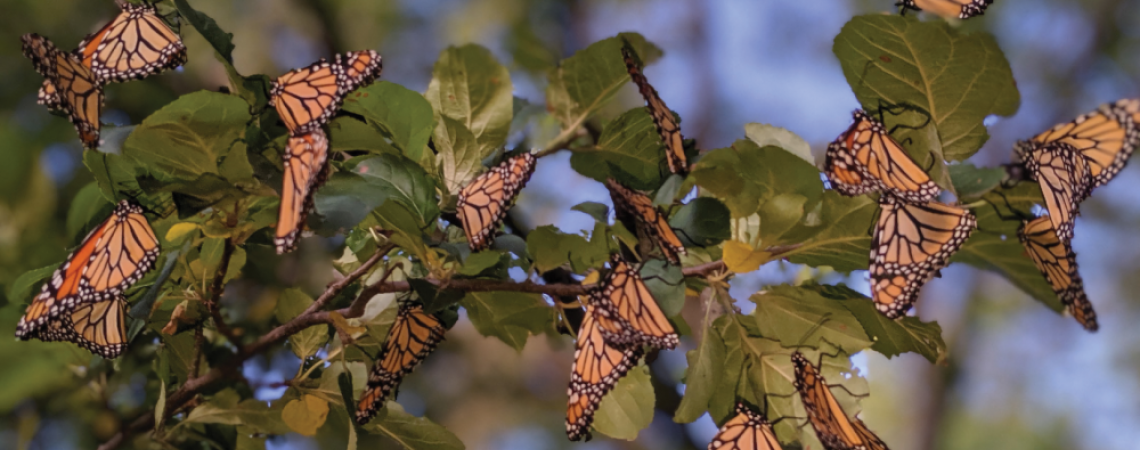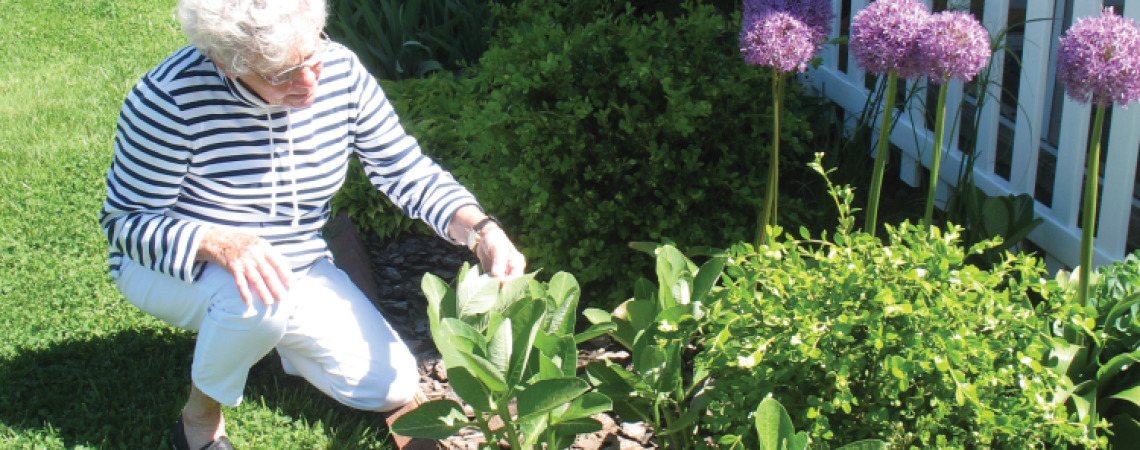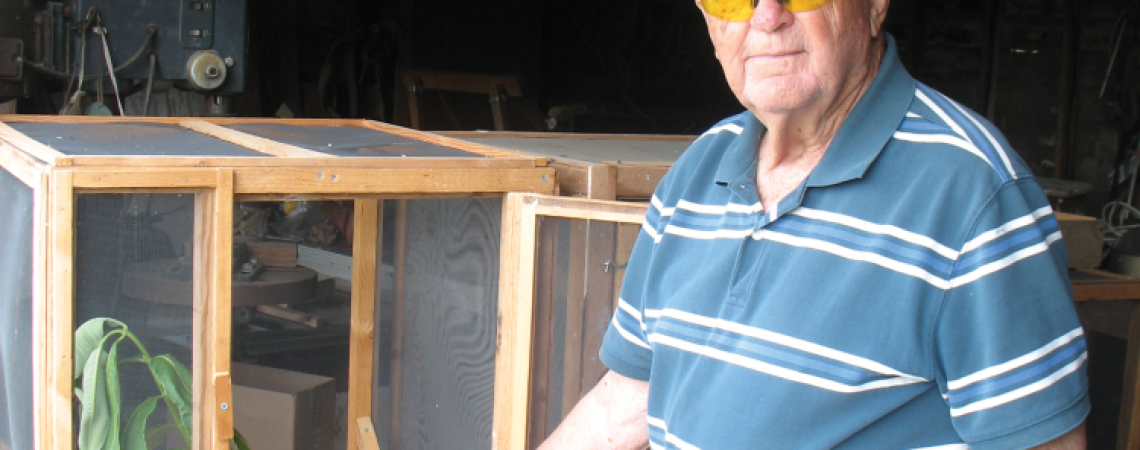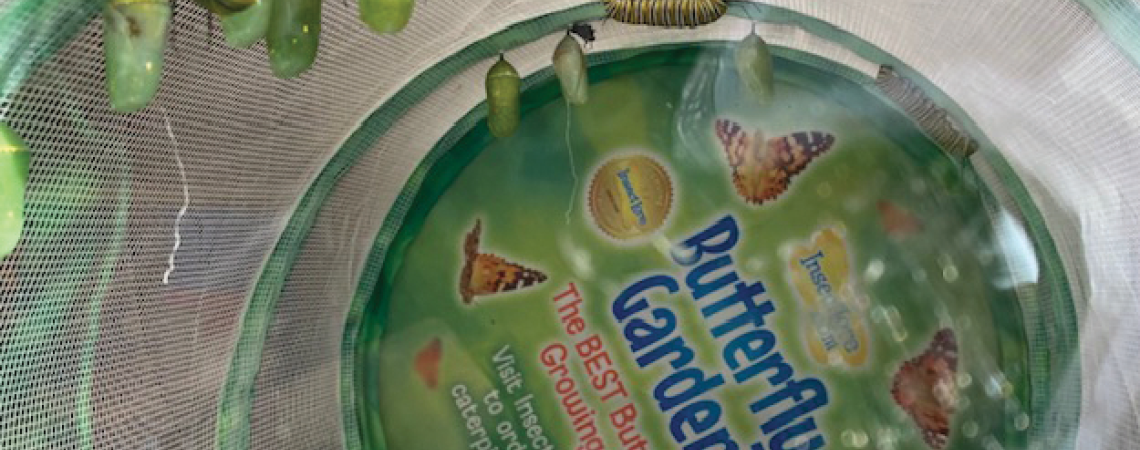While beautiful orange-and-black monarch butterflies still flutter around area lawns and gardens between May and September each year, their numbers have declined over the years because of some combination of environmental conditions, herbicide and pesticide use, and loss of suitable habitat.
A few electric cooperative members are doing what they can to help the migratory visitors.
Monarch butterfly numbers have declined over the years because of some combination of environmental conditions, herbicide and pesticide use, and loss of suitable habitat.
“I remember seeing lots of butterflies in my younger days,” says 90-year-old Alvin Brown, a retired dairy farmer who resides near New Bremen. “There aren’t nearly so many nowadays, so we have to do what we can to help.”
Like Brown, Coldwater resident Norma “Skeet” Wolters became interested in helping the monarchs long before the Union for Conservation of Nature declared the species endangered in 2022. Having been involved in the Mercer County 4-H program for more than two decades, she often included butterflies in her nature presentations.
The sight of a monarch butterfly laying her eggs on a milkweed plant sparked a similar interest for St. Marys resident Julie Metz in 2020. She quickly turned to the internet for more information and found a “whole world” of people raising butterflies.
All three conservationists are members of St. Marys-based Midwest Electric.
Brown says monarchs like sweet red clover and milkweed, and when he sees butterflies savoring the clover, that’s when he begins to check the underside of the nearby milkweed leaves, where female monarchs can lay up to 300 eggs, each roughly the size of a grain of rice.
Metz collects the eggs and places them in special containers away from predators like spiders and flies. Five days later, tiny caterpillars emerge. The caterpillars then go into mesh-sided containers to continue their life cycle.
“Those caterpillars eat milkweed like crazy,” Metz says. “That is the problem. The widespread use of herbicide has killed much of the milkweed they need.”
Brown gathers tiny caterpillars from the milkweed patch and places them in large screened-in cages. His hand-built cages are different from commercial cages in that he has devised a water source to make sure the milkweed inside stays fresh and green.
The caterpillars increase roughly 2,000 times in size due to their constant eating over a span of two to three weeks. The metamorphosis continues when the plump caterpillars climb to the top of the cages and spin a chrysalis, or pod, from which a butterfly emerges a week or two later.
Among the three of them, they have released hundreds upon hundreds of butterflies over the years. Recently, Brown released some at nearby German Protestant Cemetery as a tribute to Sandra Thieman, who gave the butterfly presentation all those years ago that originally sparked his interest. Thieman’s family was present for the occasion. He has also released butterflies to the oohs and aahs of children attending various camps and vacation Bible schools during the summer.
Wolters has made releases at a local park as well as in her backyard — much to the delight of neighborhood children. Metz usually heads to the Kuenning-Dicke Natural Area near New Bremen.
“I like to think I’m making the world a better place when I release those little guys,” Metz says. “They are eager to spread their wings and get out in the world.”
Brown stresses that anyone can play a part to help the vibrant visitors thrive. “We can plant milkweed and sweet red clover,” he says. “We can limit the use of herbicide and pesticide around their habitat.”
How to raise monarch butterflies
- Make sure your yard includes host plants like milkweed, on which butterflies lay eggs and caterpillars feed.
- Collect caterpillars from leaves of the host plant using a stick or twig from the plant. Do not touch them with your hands, as any bacteria could cause them infections.
- Place caterpillars in a clean and well-ventilated container but do not overcrowd. Ideally, the container should have fine wire mesh sides to allow the caterpillars to cling.
- Make sure to provide plenty of fresh milkweed as caterpillars are voracious eaters. They do not like dried or wilted leaves.
- Clean the cage frequently to remove waste known as frasse.
- Wait while the caterpillar forms a chrysalis, taking care to protect it from predators and weather conditions.
- Release butterflies when they emerge from the chrysalis, preferably on a sunny day in the backyard. a park, or a nature center.
